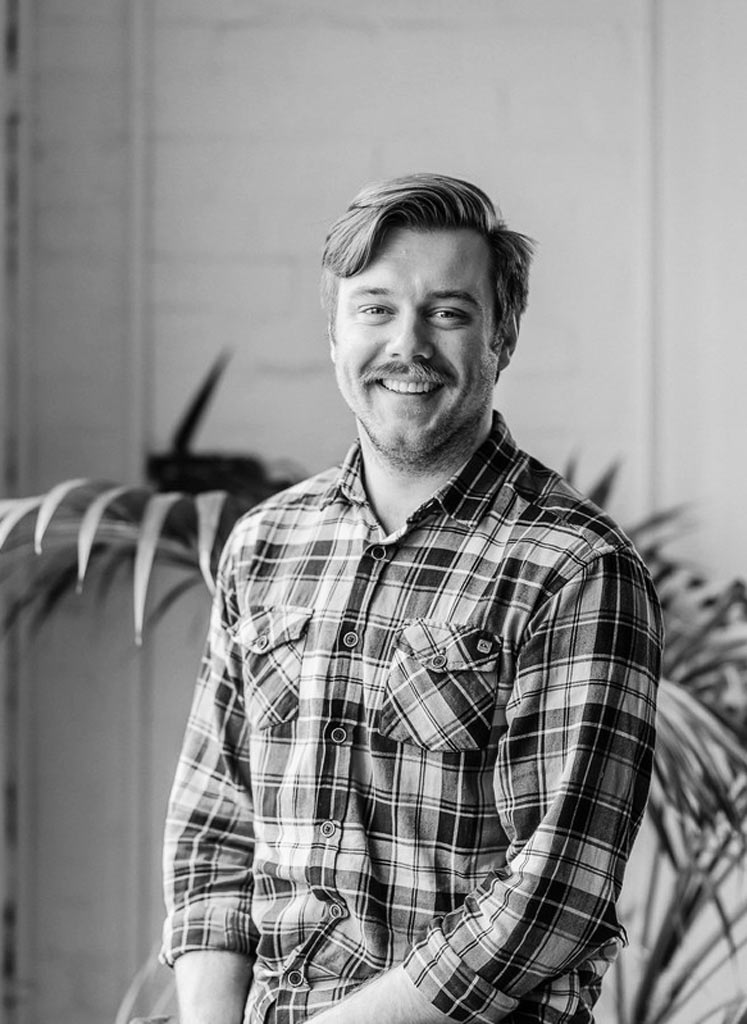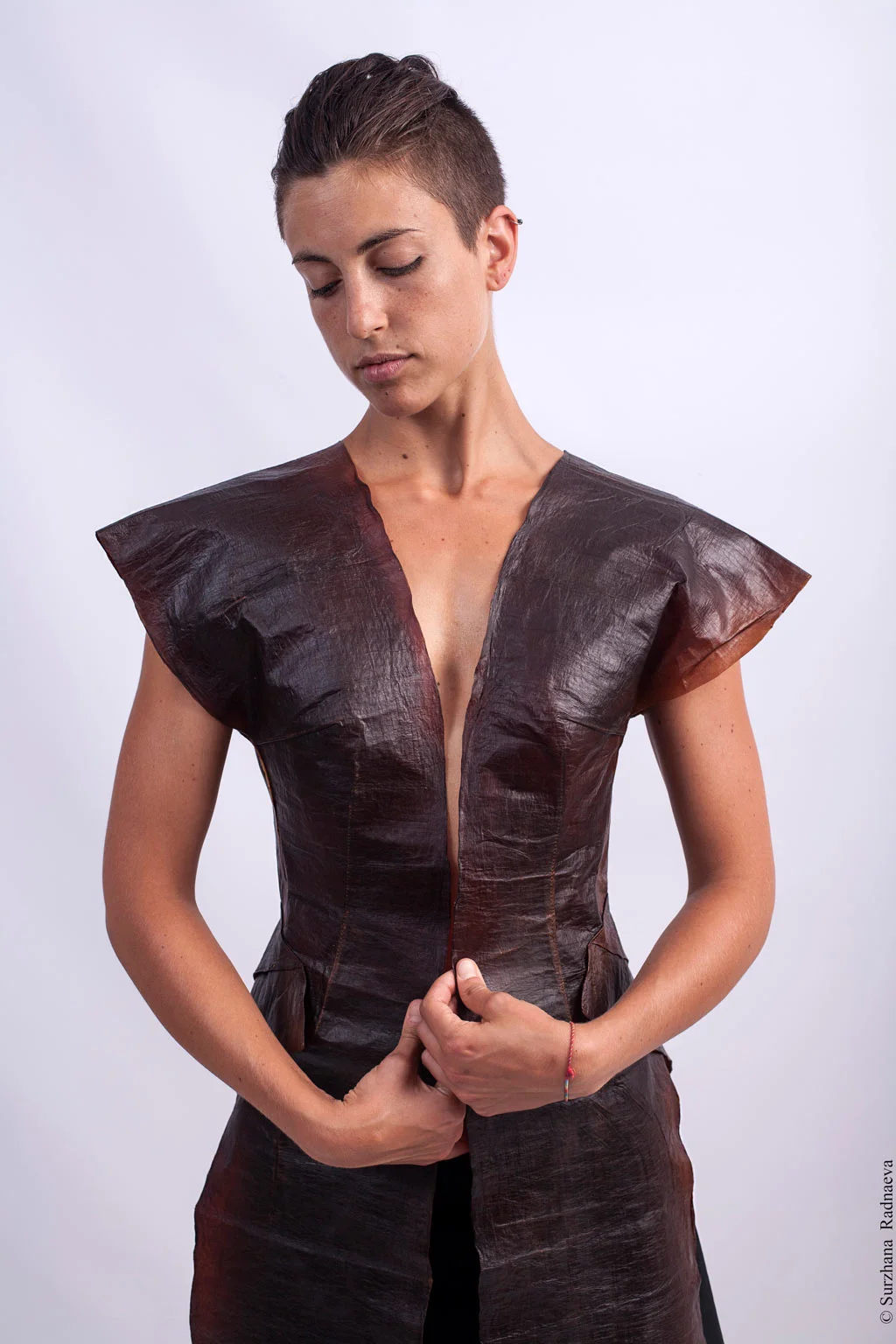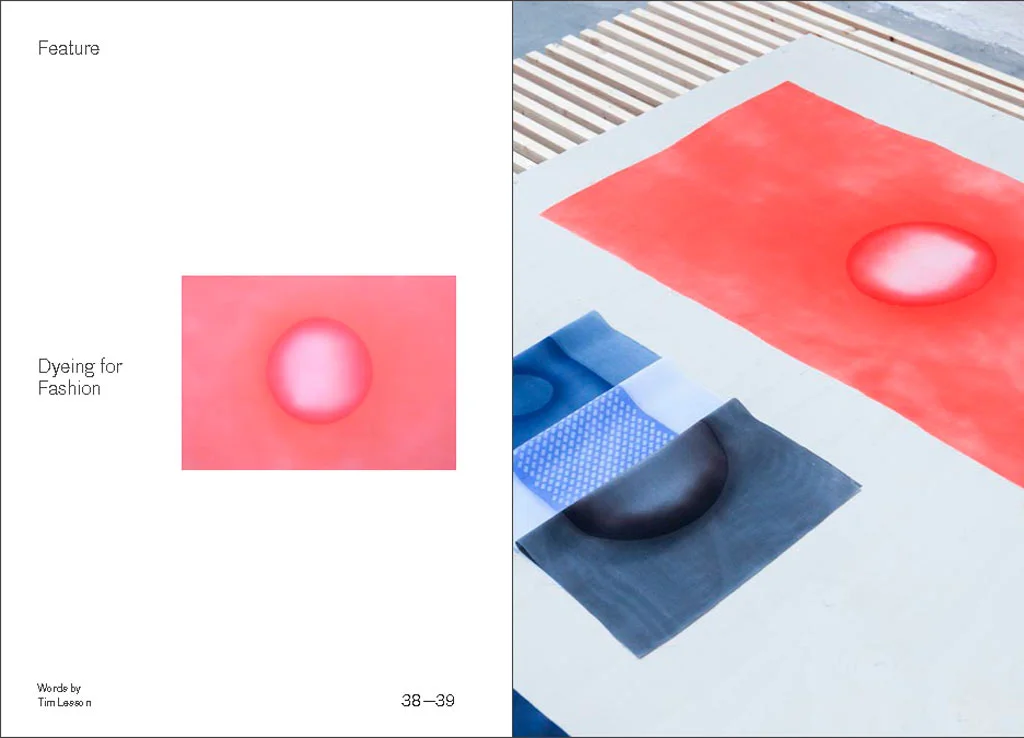Tim Leeson On Authentically Building Resilient Communities & Telling Stories That Resonate
Originally studying coastal engineering, Tim then more intimately explored his love of the ocean by becoming the editor of a global bodyboarding magazine, Riptide, for several years.
The two threads: water and the power of storytelling are unrelenting interests for Tim. His project for the Advanced Masters in Design by Data (computational design) with École des Ponts ParisTech explored the possibility of ‘biomimetic barriers’; floating breakwaters with 3D printed coral facades to assist low-lying islands experiencing sea level rise due to climate change.
Tim currently resides in South Africa and Australia, working on Gippslandia, a community newspaper he co-founded, and the diverse strategic design projects of the thr34d5 (pronounced 'threads') open agency, as well as other freelance coastal modelling and print projects.
Tim discusses the beauty of diverse and inclusive communities, providing examples where resilience has been built, as well as providing marketing and communications tips for social entrepreneurs.
Highlights from the interview (listen to the podcast for full details)
[Tom Allen] - To start off, could you please share a bit about your background and what led you to starting Gippslandia?
[Tim Leeson] - I was born and bred in Buln Buln, Victoria - home of The Mighty Lyrebirds -where I did my primary schooling. Then after high school, I spent a gap year in China, as my parents were teaching English over there. I then moved to the Gold Coast and studied coastal engineering. I loved it there. For my undergrad thesis, I had the opportunity to build a 1:10 scale model of a circular wave pool, as a proof of concept.
When I came back, I met the editor of Riptide Bodyboarding Magazine, which was my ‘bible’ growing up. And he just suggested, "Hey, how about you write something?" I thought, "Why not?". I think that first article was about drawing links between artificial waves and artificial breasts. I still don't know how it got printed, but it was a fun piece.
Nick Lawrence was the editor [of Riptide], and he was an amazing mentor. I started working for Riptide and then became the editor there for several years.
When I finished up there, I was trying to get back into engineering. The mining boom had just come off in Australia, and there was definitely no work to be had. So I headed over to Cape Town, where I joined the Ports and Marine Terminals team with WorleyParsons, and got to work on some really large scale coastal engineering projects; including the TANAP gas pipeline across Europe and also a big sea level rise study here in South Africa; which was for close to whole province (KwaZulu-Natal). Then, unfortunately, my South African work permit ran out and I was kicked out of the country, so I headed back home to Gippsland.
I was trying to get back into South Africa, but the Department of Home Affairs wasn't sure if I would qualify. So, I was looking into what to do and I saw a course in computational design in Paris at École des Ponts ParisTech and enrolled in that.
While I was home, I was doing some freelance work for The View From Here design studio, and at the same time the announcement of the closure of Hazelwood coal mine happened. There was a lot of negativity in Latrobe Valley and in Gippsland. I'd grown up thinking that if you wanted to have a career you had to leave Gippsland. And I really felt, after that spending time back home, that was no longer true. We really had to change the narratives that were happening in Gippsland.
Then [during] a couple of weeks, we set our minds to launching Gippslandia, a publication that would only offer optimistic and positive news. The co-founders with me were the great Michael Duncan and John Colabro. We went nuts for a couple of weeks and had the paper ready after some very, very long nights. Personally, Gippslandia was an amazing project to jump into and it was really inspiring right away. But I then did a course in Cape Town called Unschool, which was about disruptive design and social enterprise. After that, Gippslandia definitely had a different connotation for me, and I feel it can be even more effective and powerful.
It's a brilliant magazine in a newspaper-type format, Tim. So from your experience, what are the most important factors then when it comes to building resilient communities? Because essentially that's one of the core aims of Gippslandia, right?
Yeah, definitely. I think it comes down to trust as a key thing. I think just at a small scale, say, my parents, they have their animals and they live on a small farm. If they want to head on holidays they can ask the neighbours to take care of their animals and vice versa. That might not seem like much, but to be able to have freedom to do what you want to do, to use that to live your ‘best life’.
To know that people have your back, I think is a really key thing in resiliency. And it's those small gestures that occur many times every day that build up to have a larger scale and a larger impact that I think is really powerful. And if they're absent it becomes even more glaring.
The other thing is recognising our shared humanity with everyone that's in our community. I think that's a really key thing; this celebration of diversity and inclusion.
A common thread that's come through Gippslandia, that's proven really powerful to me, is the number of people who I've chatted to have said, "I didn't think I could do it, until I saw someone that looked like me do it”. Whether that's a young businesswoman or a Sudanese refugee that gets into AFL football; there are so many different times that that has come up. I really think that if we can celebrate everyone's individuality, then we're a long way to making more resilient communities.
Yeah, absolutely. That's a really brilliant perspective there, Tim.
So what do you believe are the most common elements when it comes to crafting and telling a brand story that resonates with a particular group of people? Because you've got a lot of experience in writing stories.
Personality. I think you have to show that you're a real person. You've definitely got to show that the subject is a person, then you add your own flavour as a writer.
We want Gippslandia to have its own personality. I think with those three attributes (mentioned above), you can connect with people a little bit easier.
I think also that not being afraid to show a full breadth of emotion in your work, and maybe, Tom, you've seen this too, [but] it’s like when you go to a conference or an event and the speaker shows a little bit of humility and maybe shares some of their values. There's something there that builds empathy and can really resonate more in the storytelling.
And then I think there needs to be a knowledge transfer. You have to offer them something of value. Especially when print is supposedly a dying medium - which I'll fight back for eternity. I really think that you have to offer the reader an incentive and that maybe is a knowledge transfer, an idea, a point of motivation or inspiration.
So what are the top things then that you believe any social enterprise or business owner should really be considering when it comes to their communications and marketing strategy? I imagine there's a lot of crossover there in the things you've just said.
Yeah, there is. There's one thing, that's like trying to capture the lightning in a bottle, and it is a topic that's come up more and more in discussions...
I think that Australians particularly, are really good at it, and that's authenticity.
It's a catch cry at the moment, but I think that we really have such a good ‘BS meter’, to put it frankly, as Australians. I think we react pretty strongly to hypocrisy. If the connections that are developed are genuine, they’re just unbelievably stronger. And nothing really cuts through if you're just faking it; it only works on a surface level.
So what are the top things then that you believe any social enterprise or business owner should really be considering when it comes to their communications and marketing strategy? I imagine there's a lot of crossover there in the things you've just said. [Continued]…
I think that you need to select the right medium for the message, so how you develop the story for an email newsletter, versus an Instagram post, versus a Twitter post. They're each unique platforms and you need to treat them as such. And that's how you get better engagement off each of them. It's not just a cut and paste approach across each one.
My next point that ties into that is listening. Some of the things that have really struck a chord with thr34d5 or with Gippslandia occur when you listen to the community that you've been developing, they give you feedback and you can come back with a post, an article or a conversation that strikes a chord a lot better. There was a post that we put out recently on the difficulties of farming, mental health and the drought. That post spread like wildfire, and it just shows that a lot of those rumblings have been in the Gippsland community for a while - it struck a chord.
You've mentioned thr34d5 a couple of times today, and in our intro, we talked a little bit about it. So I'm curious to hear about some of the projects that you're involved in with thr34d5 at the moment.
Thr34d5 stems from the Master's program. The main driver behind it is Adrien Rigobello, who's an absolute monster when it comes to taking on different design projects, and it includes a lot of the team from the masters. The course provided a real exposure to multidisciplinary cross-disciplinary international teams. We had architects, artists, engineers from all different fields and different walks of life, and the conversations and problem solving that we enjoyed in the course were amazing. I found them (classmates) incredibly stimulating and so thr34d5 was born from that. It's looking at the Anthropocene; how humans are changing the world and how we can address that.
We were a finalist for the World Architecture Festival last year with a project that was looking at changing the density and the structure of sidewalks - the concrete on sidewalks - seeing if you could get water to flow and purify in the footpath, rather than through the gutter or before it hit the gutter.
One of our biggest projects was a hospital gown that is fabricated from kombucha. So the SCOBY that comes off the top of the kombucha drink, you can process it,tan it, and form a textile. We made a gown that was dyed with a waste product from wine grapes. The waste product is really high in antioxidants; kombucha and the dye can have beneficial properties for your skin. But it also is a case of frugal design and giving agency to the patient. Because the dye changes colour, you can match it to a level of the (remaining) antioxidant. The patient can go, "I need to change this gown now, as the effectiveness has run out”. Obviously, today in Western medicine, the patient doesn't usually have agency and we thought that was a big change.
Now we're looking at kombucha as a way to address fast fashion and develop a care relationship with your fabrics. Clothing that can be repaired, rather than just thrown out. Doing maintenance on your clothes.
Then the other projects that we look at are related to water. You've seen in Cape Town, nearly running dry. We know very well in Australia, the water issues that we face there. People have sort of disconnected with the water cycle, where their water comes from, what their water use actually means, improving social agency and again, community resilience via water is a passion for sure.
Some super interesting projects there, Tim.
You're spending a lot of time in South Africa at the moment. So I'm really keen to hear about some of the interesting purpose-led projects, or people, that really inspire you there.
Wow. South Africa is an incredible place. I've spent close to six years engaged with it now, and I don't know if I'll ever really get a handle on it. It's such a complex history, and just to begin with there's 11 official languages. It's a very complex place to understand as an outsider, but I'm very fortunate to have met some amazing friends. My partner comes from one South African, background, and amazingly, my sister, her fiancé is also South African and he comes from a completely different background. So we are able to have a lot of very diverse conversations at the dinner table, which is amazing.
When I first got here, I joined a basketball team, and the coach of the basketball team has been instrumental in opening up my perspective of South Africa. The team, Heideveld Basketball Club is based on the Cape Flats outside of Cape Town. It is one of the areas with the highest rates of gangsterism. It was an area that the Apartheid government took people out of central Cape Town and dumped them onto the Flats, with not many employment opportunities, difficulties to travel into the employment opportunities. That's just manifested into quite a difficult environment for a lot of people to live. But this basketball club was phenomenal. They used sport to address the gangsterism problem; to include the kids; to raise really good citizens. To see some of the guys that I coached in the under 12 team... seeing them now starting to play for the men's team and how they've changed in that time and how they've grown, it's just such a powerful thing. That community was so inclusive. We would have team dinners and there was absolutely no hesitation to do a thank you, just a common thank you for the food and everyone gathering, a Christian prayer and then a Muslim prayer and everyone was included. And we could do better with that in Australia, I feel.
Yeah, I absolutely agree. Yeah, that sounds like a wonderful club and project that's creating a lot of really positive social change there.
So to finish off Tim, I'd love to hear a few great books or other resources that you think would really inspire our listeners.
Well, honestly, I've been listening to a lot of basketball podcasts lately because of the NBA Finals. But now that that's finished, (congratulations to Toronto), some of the things I've been into… I just finished Prisoners of Geography by Tim Marshall, which is 10 maps that tell you everything about global politics and geopolitics. I found that really interesting, especially in the discussions on Africa and how Africa's developed. I really recommend that.
It's been a progression for me from Uncle Bruce Pascoe's Dark Emu; to Bill Gammage's The Greatest Estate; to Charles Massey’s Call of the Reed Warbler. I found those stories mind-blowing and it's really changing how I look at Australia.
You may have come across The Rescope Project too. I think it's recently been changed to ReGenNarration, which is a podcast program talking to lots of different experts and people involved in social change in Australia and resiliency again. And I have to give props to a Gippsland podcast, The Gloaming, they do some great stuff too.
Initiatives, resources and people mentioned on the podcast
Recommended books
Prisoners of Geography by Tim Marshall
Dark Emu by Bruce Pascoe
The Greatest Estate by Bill Gammage
Call of the Reed Warbler by Charles Massey













